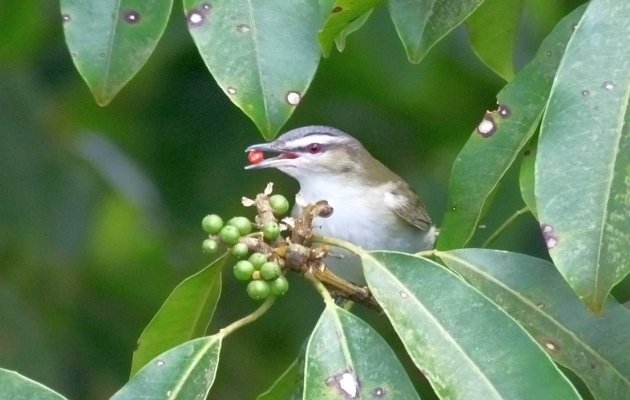
For the first 30 something years of my life, fall migration was when the warblers “sipped”, “chipped” and “seeped” in the tired, late summer leaves. It was when I searched for migrant birds on gorgeous days of September, usually near the Niagara Gorge, sometimes while fishing for salmon in the powerful green waters. It was also when October came with cool weather and bunches of White-throated Sparrows, shy Hermit Thrushes. The muted colors of Blackburnians, Black-throated Greens, and Blackpolls fit right in with the dull greens and golden highlights of the early fall vegetation. As the weather cooled, looking up might reveal a Sharpie or an occasional Cooper’s. Back then, the Sharp-shinneds were much more common, the populations of Cooper’s still steadily getting back to normal after the chemical onslaught of the 50s and 60s and merciless avian murder before then.
After moving to Costa Rica in 2007, my fall migration took on a different approach. It became one of wet weather, one where the vegetation was always green and leafy, where few obvious signs could be associated with the movements of millions of birds. But it happened nonetheless and if you go birding in Costa Rica in September, especially during October, you can’t help but notice. These are six things I have learned about the autumn movement in Costa Rica:
It Happens from August to November
Just as in the north, fall migration in Costa Rica doesn’t happen for two or three short weeks. It’s a protracted event, one that begins with waders, Willow Flycatchers, and other first birds on the move to the south. It picks up in September but the biggest numbers seem to pass through Costa Rica in October. This is when we might see the greatest variety and numbers of wood-warblers, where we can watch dizzying groups of swallows zip through the skies as kettles of Turkey Vultures, and Broad-winged and Swainson’s Hawks flow towards South America. Even in November, migrants can still show up, the final ones, the birds that took their time or are maybe lost. These can be cuckoos and it always seems odd but given the dynamic movements of those sneaky long-distance flyers, we shouldn’t be surprised by any of their antics.
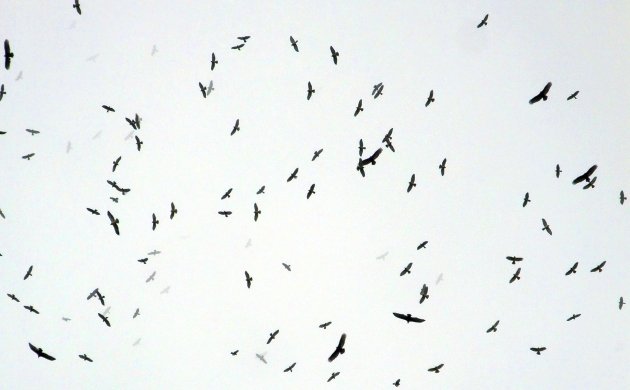
Eastern Kingbirds Form Flocks
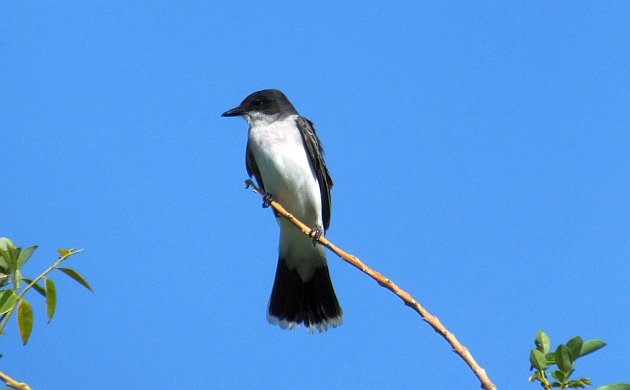
The Eastern Kingbirds I knew from the fields of upstate New York were smartly dressed birds that perched on fences and chased Red-tailed Hawks. They were always in pairs and their chittering calls were synonymous with the gentle buzzing of insects and wildflowers in sunny places. In Costa Rica, they become another sort of animal. One that barely calls, one that usually occurs in flocks and that can fly through in waves of hundreds. In flight, they begin to resemble swallows, and in trees, their social consumption of berries reminds me of waxwings.
Swallows Everywhere
Costa Rica is a great place to watch swallows, especially Cliff Swallows. This being an uncommon species in upstate New York, I appreciate having an abundance of Cliff Swallows to look at. Many fly way high up there, bits of flotsam against the tropical clouds but with literally many millions flying through Costa Rica, I also get more than enough opportunities to see them perched on wires and flying at eye level. Bank and Barn Swallows also migrate through in huge numbers, maybe even the majority of the individuals of these common species that breed in North America. They pass overhead in swirling waves, fly south in massive constant swarms along the Caribbean coast. How many Sinaloa Martins also fly this way? Is there an adventurous, lost House Martin somewhere in the bunch? More reasons to keep looking.
Cerulean Warblers
One of the more exciting aspects of fall migration is Costa Rica is the presence of this special warbler. As befits their threatened status, we don’t see huge numbers of them, sightings are far from guaranteed. But, a large part of the population does move through Costa Rica and if you go birding in the right places between late August and late September, you will very likely see several. Although Ceruleans can appear in various spots (I even hit gold with one in back of our place the other day!), most seem to use the foothill and middle elevation forests of the Caribbean slope. The Las Brisas Reserve in particular stands out as being an important site for this small beauty. I can’t blame them, those are some beautiful rainforests brimming with life.
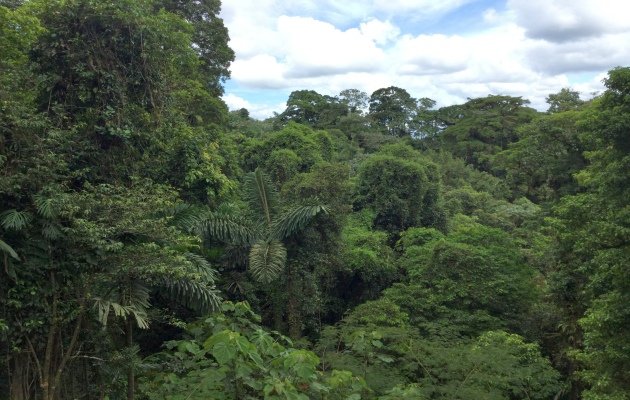
Quiet Birds, on the Move
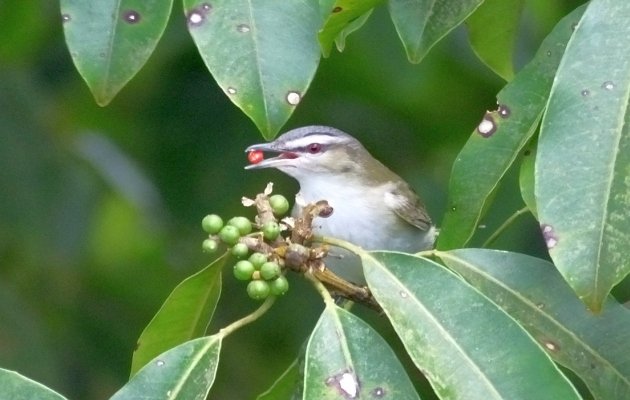
Birds migrating through Costa Rica seem to be in stealth mode. Although some of the warblers do call, I have this impression that it’s much less than in the north, that they really keep quiet while they do their migration thing. Maybe the excitement of leaving the breeding grounds has been vanquished by the realities of survival during a dangerous passage. Fly through the night, land and find cover, find food, keep eating and keep moving. Stick with other small birds because there are dangers here too. There are also hawks, small owls that eat birds, cats near the ground, and snakes, always snakes. Stick together, keep moving, and most of all, keep quiet. You gotta get more than enough food to take to the skies when it gets dark and make your way to the winter home.
Pishing Isn’t as Effective
Perhaps in keeping with the quiet times, fall migration birds in Costa Rica don’t respond much to pishing. I hate to admit it but it’s either that or my personal pishing sucks. This could also be the case but since it does sometimes work, especially during the winter months, it seems like birds on the move just don’t want to respond. Maybe they just don’t have time to respond, can’t afford to waste the energy on nonsense because they are busy with survival.
Birds Can Fly Right Over Costa Rica
The sixth aspect of fall migration in Costa Rica is that birds can easily fly right on over. I think this is one of the reasons why we see so few Upland Sandpipers, might be why we see few numbers of Veery, and also explains why we don’t see large numbers of Baird’s and Buff-breasted Sandpipers. Those birds don’t need to stop here. If they don’t feel like it, they can just keep going and fly over a place the size of West Virginia in a day. They might also stop off in one or two places that lack birders before continuing on that same day or the next. If I listen to the pre-dawn sky in late September, I can probably pick up the faint bubbling whistle of a few Upland Sandpipers. By morning, they are probably in Panama.
Fall migration is happening in Costa Rica, even as I write this. I better go look out the back window, see how many swallows are flying overhead, see if a cuckoo has come out of the woodwork, see which birds are moving through the neighborhood on their incredible journey south.













Great article, Patrick! Thank you for your perspective, which is fascinatingly different than mine. Except for a small group of shorebird species, most migratory birds come to southwestern Mexico to stay the winter. We don’t get huge flocks passing overhead like you do, alas. Two more observations: Please, please do find some of my Sinaloa Martins there! And, I would guess pishing doesn’t work on birds that are only passing through, since they probably put their territorial instincts on hold in places for which they have no interest in establishing personal territory. But having said that, my pishing sucks too.
@Paul- Thanks, interesting to hear that you don’t see many passage migrants. Yes, Sinaloa Martin would be nice! Would be new for the country list, I bet it does pass through on rare occasions. I know a very experienced birder/ornithologist who did report one and was sure that is what it was but he didn’t take a picture.
Pishing- sounds like a good explanation, that would explain why it does work with various migrant species in CR once they are on wintering territories.